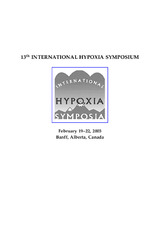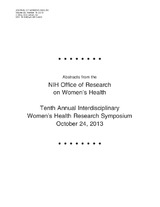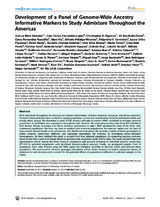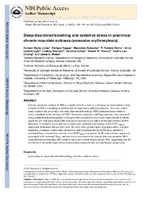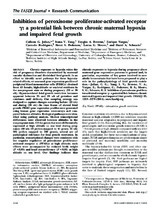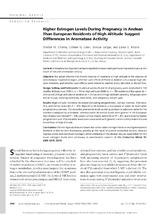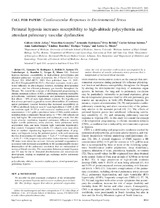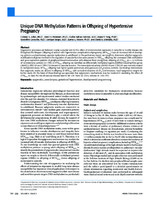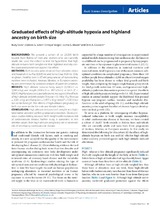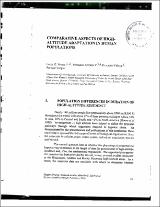Buscar
Mostrando ítems 1-10 de 39
Andean women have greater uterine artery (UTA) enlargement during pregnancy than european residents of 3600 m.
([s.n.], 2003)
Abstract.
Babies weigh less at high altitude but multi-generational high-altitude residents are protected from this birth weight decline (Moore HAMB 2001). Objective: We asked if higher arterial oxygenation and/or blood ...
Inhibition of peroxisome proliferator gamma (PPARɣ) : a potential link between chronic maternal hypoxia and impaired fetal growth
(Journal of Women's Health, 2013)
Background and Objective: Chronic maternal hypoxia impairs
fetal growth and increases the incidence of intrauterine growth restriction (IUGR). To identify the mechanisms underlying these hypoxia-related effects, we evaluated ...
Development of a panel of genome-wide ancestry informative markers to study admixture throughout the Americas
(PLOS Genetics, 2012-03-08)
Abstract.
Most individuals throughout the Americas are admixed descendants of Native American, European, and African ancestors.
Complex historical factors have resulted in varying proportions of ancestral contributions ...
Sleep-disordered breathing and oxidative stress in preclinical chronic mountain sickness (excessive erythrocytosis)
(Respiratory Physiology & Neurobiology, 2013-01-22)
Abstract.
Chronic mountain sickness (CMS) is considered to be a loss of ventilatory acclimatization to high
altitude (>2500 m) resulting in marked arterial hypoxemia and polycythemia. This case-control
study explores ...
Inhibition of peroxisome proliferator-activated receptor ɣ : a potential link between chronic maternal hypoxia and impaired fetal growth
(FASEB Journal, 2014)
Abstract.
Chronic exposure to hypoxia raises the
risk of pregnancy disorders characterized by maternal
vascular dysfunction and diminished fetal growth. In an
effort to identify novel pathways for these hypoxiarelated ...
Higher estrogen levels during pregnancy in Andean than European residents of high altitude suggest differences in aromatase activity
(J Clin Endocrinol Metab, 2014-08)
Context: Uteroplacental hypoxia has been reported to lower estrogen levels in preeclampsia as the
result of reduced aromatase activity.
Objective: We asked whether the chronic hypoxia of residence at high altitude in the ...
Perinatal hypoxia increases susceptibility to high-altitude polycythemia and attendant pulmonary vascular dysfunction
(Am J Physiol Heart Circ Physiol, 2015-04-27)
Perinatal hypoxia increases susceptibility to high-altitude polycythemia and
attendant pulmonary vascular dysfunction. Am J Physiol Heart Circ
Physiol 309: H565–H573, 2015. First published June 19, 2015;
doi:10.1152/a ...
Unique DNA methylation patterns in offspring of hypertensive pregnancy
(Clin Transl Sci., 2015)
Abstract.
Epigenomic processes are believed to play a pivotal role for the effect of environmental exposures in early life to modify disease risk throughout the lifespan. Offspring of women with hypertensive complications ...
Graduated effects of high-altitude hypoxia and highland ancestry on birth size
(Pediatric Research, 2013-10-02)
Background: We present a cohort of ca. 25,000 birth
records from Bolivia of men and women who are currently
adults. We used this cohort to test the hypothesis that high
altitude reduces birth weight and that highland ...
Comparative aspects of high-altitude adaptation in human populations
(Adv. Exp. Med. Biol., 2000)
Abstract.
The conditions and duration of high-altitude residence differ among high-altitude populations. The Tibetan Plateau is larger, more geographically remote, and appears to have been occupied for a longer period of ...

